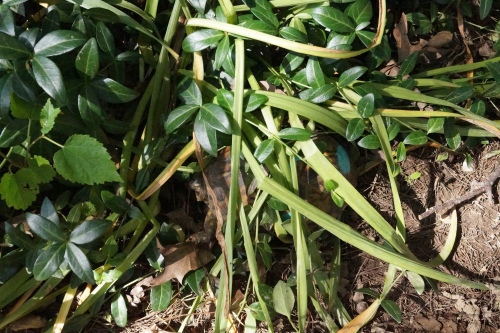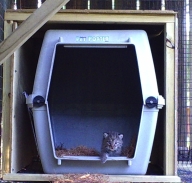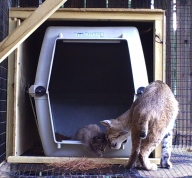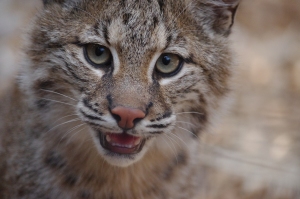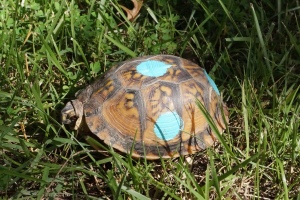 This is Marti. Marti is an eastern box turtle with an interesting life story. A few years ago, Marti had a run-in with a lawn mower that resulted in the loss of one of her back feet. Upon realizing that the turtle had been injured, the lawn mower operator brought her to SIUE’s Turtle Research and Rescue Lab, which collaborated with TreeHouse on turtle rehab. Rehab was only one aspect of the lab’s work, though. The researchers there tagged and tracked turtles to learn about their dispersal patterns and population structure. So, after her wounds had healed, Marti was fitted with a radio tracking device and released on SIUE’s extensive campus.
This is Marti. Marti is an eastern box turtle with an interesting life story. A few years ago, Marti had a run-in with a lawn mower that resulted in the loss of one of her back feet. Upon realizing that the turtle had been injured, the lawn mower operator brought her to SIUE’s Turtle Research and Rescue Lab, which collaborated with TreeHouse on turtle rehab. Rehab was only one aspect of the lab’s work, though. The researchers there tagged and tracked turtles to learn about their dispersal patterns and population structure. So, after her wounds had healed, Marti was fitted with a radio tracking device and released on SIUE’s extensive campus.
It wasn’t long before the researchers monitoring Marti’s tracking device realized that something was wrong—she had been stuck in one place for much too long. So, they went out to find her. When they located the tortoise, the problem was clear. The oddly pointed stump of her missing foot had gotten stuck in the ground, and she was unable to get free. The researchers helped her get loose and decided to give her another shot at life in the wild. But it wasn’t long before her radio signal stopped moving again, and the researchers had to rescue her once more. It was obvious that Marti would not be able to survive on her own.
So Marti came to live in TreeHouse’s Education Center. While there, she delighted and informed a multitude of visitors, helping our snakes and aquatic turtles teach people about reptiles.
We all loved having Marti at TreeHouse, but she spent her days staring out of her terrarium and out the window into the flower beds in front of the Ed Center. When a TreeHouse volunteer who also happens to be a grade school science teacher mentioned that she would love to have a box turtle in her classroom, but she knew better than to take one out of the wild, we found the perfect solution. Marti would spend the school year roaming the classroom and helping kids learn about reptiles, and in the summer she would return to TreeHouse.
But when Marti came back this summer, we found it difficult to confine her to her terrarium after the relative freedom she had enjoyed all year. She went back to spending all her time looking out the window, and maybe we were anthropomorphizing her a bit, but she seemed a little depressed. So the volunteer who had Marti in her classroom (my mom, actually) donated the materials to build an outdoor enclosure for Marti.
It doesn’t take all that much to keep a turtle in one area—especially one whose missing foot detracts from her ability to dig. It is much more difficult to keep potentially mischievous raccoons out, so we decided that in order to keep things simple, Marti would only spend the days outside, and we would bring her in overnight.
So now Marti has her own outdoor enclosure, a fenced-in area of vegetation at the base of a huge oak tree. She has a little pool set into the ground, sun, shade, and a great variety of grubs, worms, leaves, and roots available for the foraging. The only problem is that she is so well camouflaged under the leaves and pine needles that it can be very difficult to find her when it’s time to bring her in for the night! As a result, Marti has now been decorated with a few bright blue spots painted on her shell. If you get the chance to visit TreeHouse this summer, make sure you take a moment to see if you can find her!
